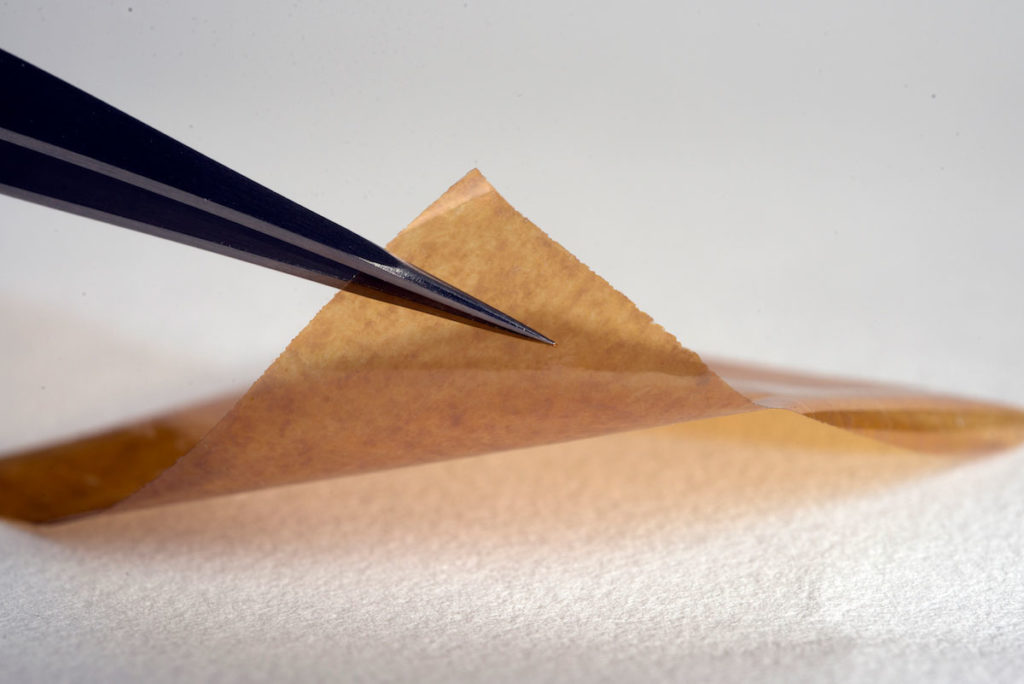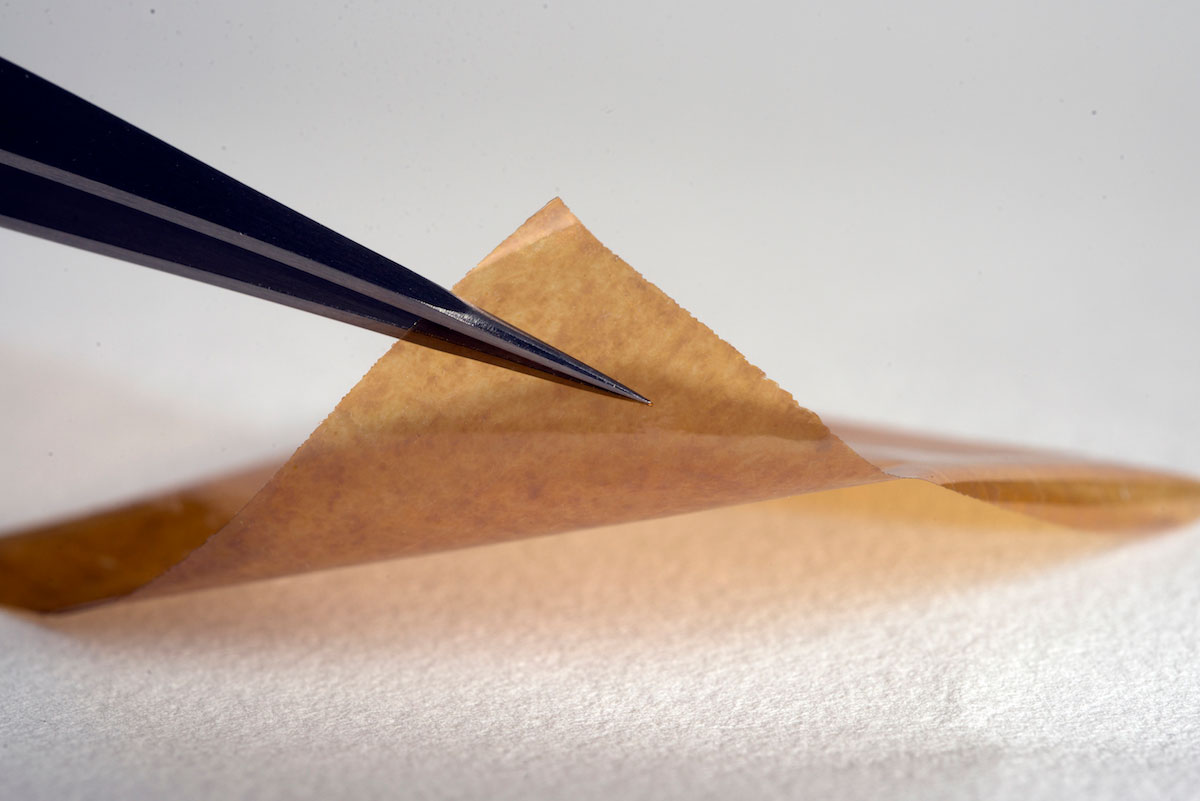
The MicroLyte bandage is thinner than a human hair and able to be absorbed into the wound. The material is shown here on a fabric background. Image courtesy of Imbed Biosciences.
The University of Wisconsin–Madison (UW–M) and a spinoff company, Imbed Biosciences, Fitchburg, WI, have received a $1.5 million, 2-year grant from the National Institutes of Health to test whether adding gallium metal ions to an ultra-thin material carrying antimicrobial silver can defeat the “biofilms” that shield bacteria from antibiotics. The work has implications for the healing of diabetic foot ulcers and other persistent wounds.
Imbed’s existing product, called MicroLyte, was cleared by the US Food & Drug Administration for marketing in August 2016. The technology was invented by the company’s CEO, Ankit Agarwal, PhD, while he was pursuing his postdoctoral studies at UW–M. MicroLyte contains a tiny dose of metallic silver particles on a flexible, 25-micrometer thick, absorbable polymeric multilayer film. The covering places silver in direct contact with bacteria.
Silver’s antimicrobial activity rests on its ability to punch holes in the bacterial cell wall, but a biofilm can block that exposure. Chemically, gallium ions resemble a form of iron that cells use to gain chemical energy through the process of reduction. “Bacteria inside the biofilm are looking for more iron, so they end up taking up gallium,” said Agarwal. But gallium ions cannot be reduced, and the bacteria atrophy for want of energy, helping to break up the biofilm. By placing nanometer-sized particles of both metals on the ultra-thin film, “we are using levels of both metals that are so low that they are not toxic to human cells, placed on a film that actually supports growth of skin cells,” Agarwal added.
Under the grant, silver plus gallium will be tested on full-thickness wounds in pigs in the UW–M School of Veterinary Medicine; the healing in pig skin wounds is similar to healing in humans. Research at the veterinary school has already shown that the combination film can “completely disperse the bacteria biofilms created by a mix of two pathogenic bacteria,” said Agarwal. “Treatment with a commercial, silver-based dressing—not MicroLyte—had no effect.”
MicroLyte is on the formulary of 5 major hospital systems, including UW Health, and is used in more than a dozen other hospitals across the country. Angela Gibson, MD, PhD, FACS, a burn surgeon and medical director of UW Health wound healing services, has used MicroLyte, with good results, on patients of all ages when conventional products have failed. Gibson said she looks forward to a clinical trial of the product to determine if her experience holds true in a larger study of patients.






